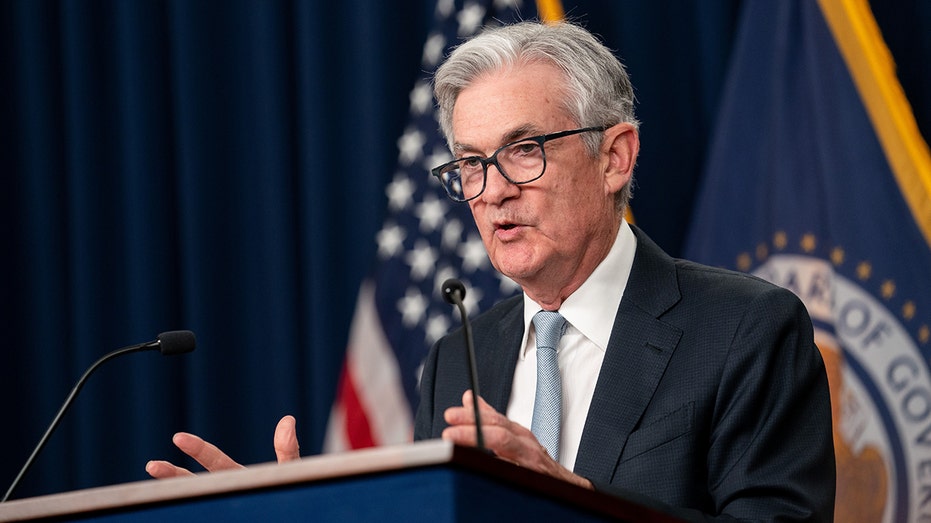Fed raises interest rates by a quarter point but signals inflation fight's not over
Fed policymakers signal additional rate hikes are likely this year
Fed's Powell engaged in 'power struggle' with markets to prevent rally: Jon Hilsenrath
Wall Street Journal senior writer Jon Hilsenrath discusses expectations for the Fed's next interest rate decision on 'The Claman Countdown.'
The Federal Reserve on Wednesday raised its benchmark interest rate by a quarter of a point, further slowing its aggressive campaign to cool the economy amid growing evidence that stubbornly high inflation is finally starting to ease.
The widely expected move puts the key benchmark federal funds rate at a range of 4.5% to 4.75%, the highest since 2007, from near zero in March 2022. It marks the eighth consecutive rate increase, following a half-point hike in December and four jumbo-sized 75-basis-point hikes before that.
Fed officials are in the midst of the most aggressive tightening campaign since the 1980s as they try to crush stubbornly high inflation that is still running near the highest pace in four decades, despite early signs of a slowdown.
The big question for investors is what comes next in the Fed's inflation fight, including how much higher officials plan to raise rates and what they need to see before stopping the increases. Markets — which have bet on rate cuts in the second half of the year — fell after the Federal Open Market Committee (FOMC) signaled "ongoing increases" in the federal funds rate are necessary.
INFLATION STILL OUTSTRIPPING WAGES IN MOST US CITIES
"The committee anticipates that ongoing increases in the target range will be appropriate in order to attain a stance of monetary policy that is sufficiently restrictive to return inflation to 2% over time," the FOMC said in its post-meeting statement, unchanged from December.
Stocks initially fell on the news, with the Dow Jones Industrial Average shedding more than 300 points. However, markets roared back during Fed Chairman Jerome Powell's press conference when he acknowledged the "disinflationary process has started."
In a potentially reassuring sign that rate hikes could soon come to an end, the FOMC tweaked the statement slightly to indicate that the "extent of future increases" hinges on a number of factors, including the lag effect of monetary policy. At their December meeting, Fed officials signaled they see the "terminal rate" — or point where rates are sufficiently restrictive — around 5%. That would imply just one more quarter-point hike this year.
| Ticker | Security | Last | Change | Change % |
|---|---|---|---|---|
| I:DJI | DOW JONES AVERAGES | 49359.33 | -83.11 | -0.17% |
| I:COMP | NASDAQ COMPOSITE INDEX | 23515.387515 | -14.63 | -0.06% |
| SP500 | S&P 500 | 6940.01 | -4.46 | -0.06% |
"We think we've covered a lot of ground, and financial conditions have certainly tightened. I would say we still think there's work to do there," Powell told reporters regarding the peak rate. "We haven't made a decision yet on exactly where that will be… It could certainly be higher than what we're writing down right now."
The latest rate hike decision underscores just how committed the Fed is to wrestling high inflation under control, despite early evidence that consumer prices may have peaked earlier this year. Government data released earlier this month showed that the consumer price index fell 0.1% in December from the previous month, although it remains up 6.5% from the same time one year ago.
Inflation remains about three times above its pre-pandemic average and far higher than the Fed's 2% target.

U.S. Federal Reserve Chair Jerome Powell attends a press conference in Washington, D.C., on Nov. 2, 2022. (Liu Jie/Xinhua via Getty Images / Getty Images)
The meeting comes against the backdrop of a slowing economy and rising fears of a downturn. Demand is weakening among consumers, gross domestic product is softening and the housing market is almost certainly in a recession.
CLICK HERE TO READ MORE ON FOX BUSINESS
There are also signs the labor market is beginning to slow, with the economy adding just 223,000 jobs in December, the smallest gain in two years.
A growing number of Wall Street economists anticipate the Fed's actions will tip the economy into a recession next year. Hiking interest rates tends to create higher rates on consumer and business loans, which then slows the economy by forcing employers to cut back on spending.





















